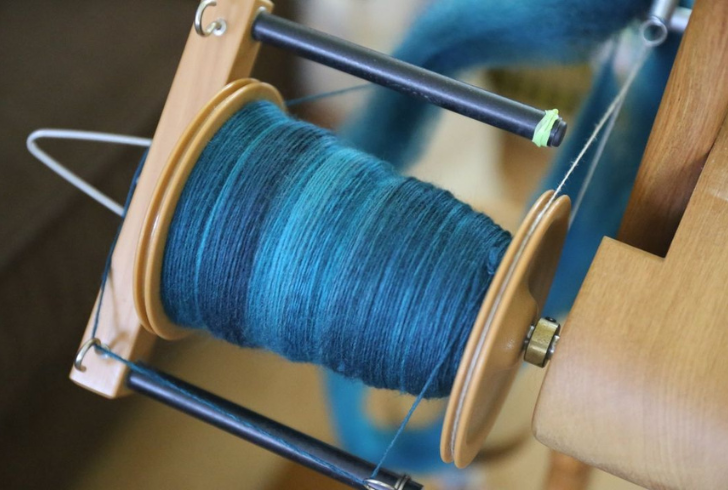
Why Do Major Brands Still Depend on Synthetic Fibers in Fashion?

In today’s fashion industry, despite growing awareness around sustainability and environmental concerns, many leading brands continue to rely heavily on synthetic fibers in fashion throughout their production processes. These synthetic fibers, particularly polyester, remain widely used, even as regulatory efforts intensify to push for a transition toward more eco-friendly materials.
A recent report from a nonprofit organization highlighted this issue, revealing that many companies are not only maintaining their use of synthetic fibers but, in some cases, increasing it.
Key Findings From Recent Studies
The report analyzed the use of synthetic fibers across 50 major fashion brands, spanning fast fashion, sportswear, and luxury labels. Some notable findings include:
- Inditex (owner of Zara) – This brand was found to use more synthetic fibers than any other company in the study. In fact, its use of fossil-fuel-based fabrics has grown by nearly 20% since the last survey.
- Shein – The fast fashion giant was found to have the highest proportion of synthetic to natural fibers, with an astonishing 82% of its materials coming from fossil sources.
- Polyester Dominance – Out of 23 companies that shared additional information, 11 reported an increase in their use of polyester and other fossil-based fabrics, while only three said they had reduced their use of these materials.

Instagram | woolnspinning | Major fashion brands continue to rely heavily on synthetic fibers, with some even increasing their use.
The Rise of Polyester and Other Synthetic Fibers
According to the report, synthetic fibers now make up about 69% of all textile production worldwide, with that number expected to grow to 73% by 2030. The primary reason behind this trend is the versatility and affordability of materials like polyester. These fabrics enable brands to produce cheaper garments, which contribute to the fast fashion cycle of mass production, consumption, and disposal.
While synthetic fibers in fashion are criticized for their environmental impact, their affordability and durability make them a preferred choice for many fashion companies, especially in the fast fashion sector. These materials are also easier to produce at scale, making them attractive to brands aiming to maximize profits in a highly competitive industry.
Limited Transparency in Fashion Brands
Despite mounting pressure to reduce reliance on synthetic materials, transparency remains an issue. Over half of the companies contacted for the study did not fully respond, with many offering limited or no information on their use of synthetic fibers. This lack of transparency makes it difficult for consumers and watchdogs to gauge the progress of individual brands in terms of sustainability.
Even among those that did respond, only six companies, including Zara, Lululemon, Mango, and Nike, were found to publish data about the volume and share of synthetic fibers they use. Other companies provided data to the researchers privately, but the overall lack of transparency was described as “corporate secrecy” by the report’s authors.
The Environmental Impact of Synthetic Fibers
One of the most significant concerns with synthetic fibers in fashion is the environmental damage they cause. Derived from fossil fuels, synthetic materials like polyester are not biodegradable and contribute to plastic waste. When these garments are disposed of, they break down into microplastics that pollute waterways and ecosystems, making it challenging to manage long-term waste.
Additionally, the production of synthetic fibers requires a significant amount of energy and emits high levels of carbon dioxide, contributing to global warming. With the continued demand for fast fashion, the industry’s reliance on these materials is only exacerbating environmental problems.
Are Any Brands Leading the Way?

Instagram | dl_dressland | Despite Hugo Boss’s goal to phase out polyester by 2030, its use of the fabric increased by 143% from 2020 to 2023.
Amid the growing reliance on synthetic fibers, a few brands have taken steps to reduce their use of these materials. For instance:
- Reformation – The brand has committed to phasing out virgin synthetic fibers by 2030 and aims to reduce its total use of synthetic materials to less than 1% by 2025.
- Hugo Boss – Although Hugo Boss has pledged to eliminate polyester and polyamide by 2030, its use of polyester increased by 143% between 2020 and 2023. The brand needs to set clear milestones and demonstrate consistent progress toward reducing its reliance on synthetic materials.
Future of Synthetic Fibers in Fashion
The fashion industry is facing increasing pressure from both consumers and regulators to address its environmental impact. In the European Union, upcoming legislation could potentially force brands to reduce their reliance on synthetic fibers and fossil-fuel-based fabrics. However, the report cautions that the level of commitment from the industry remains low, and meaningful change will require strong regulatory measures.
While some brands are making efforts to reduce their use of synthetic fibers, the overall trend still points toward continued reliance on these materials, particularly polyester. Without significant regulatory intervention or a broader industry-wide commitment to sustainability, the dominance of synthetic fibers in fashion is likely to persist.
More inBeauty & Cosmetics
-
`
Are Popular Diet Trends Actually Good for Your Heart?
Diet trends grab headlines every year, promising everything from glowing skin to dramatic weight loss. But when it comes to the...
July 30, 2025 -
`
Why Are Men Taller Than Women? New Genetic Study Finds Clue
For centuries, the average height difference between men and women has been noticeable—men generally stand about five inches taller. While environment...
July 23, 2025 -
`
How Upcycled Beauty Ingredients Are Reshaping the Industry’s Future
The beauty industry is going through a big shift — and it’s not just about trends. As waste problems grow and...
July 17, 2025 -
`
A Look Inside Faith Kipyegon’s Groundbreaking Mile Run in Paris
Last week in Paris, Faith Kipyegon returned to a place she knows well: Stade Sébastien Charléty. But this time, she wasn’t...
July 9, 2025 -
`
Dairy Is Making a Major Comeback — And Health Shoppers Are Loving It
Just a few years ago, dairy sat quietly in the back seat while plant-based alternatives took the spotlight. Now, it’s stepping...
July 4, 2025 -
`
Does Aging Cause Dental Problems?
Aging doesn’t automatically mean losing teeth or developing gum disease. In fact, older adults today are holding onto more of their...
June 25, 2025 -
`
How Upcycled Ingredients Are Shaping the Future of Cosmetics
What used to end up in bins or compost heaps is now finding a new life inside skincare bottles and beauty...
June 18, 2025 -
`
Rock Legend Rod Stewart Trains to Break Sprint Record at 80
Age isn’t slowing Rod Stewart down. Known worldwide for his legendary voice, stadium-filling tours, and timeless hits like “Maggie May”, the...
June 11, 2025 -
`
The Truth Behind Detox Diets – Health Boost or Risky Trend?
It’s hard to scroll through your feed without seeing someone sipping green juice with promises of instant energy, glowing skin, and...
June 3, 2025














You must be logged in to post a comment Login